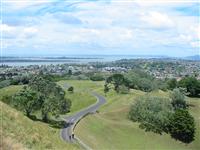 Work toward a more sustainable environment?
Work toward a more sustainable environment?
Who Should Study Plant Ecology?
-
Land Managers and Developers
-
Farmers
-
Landscape Architects and Planners
-
Botanists, Environmentalists, Scientists
-
Teachers Consultants, etc
Take this for professional development; or as a component of a larger course -the first step toward a new and rewarding career.
This course helps you understand the nature and principles of plant ecology and apply that understanding to the cultivation of plants.